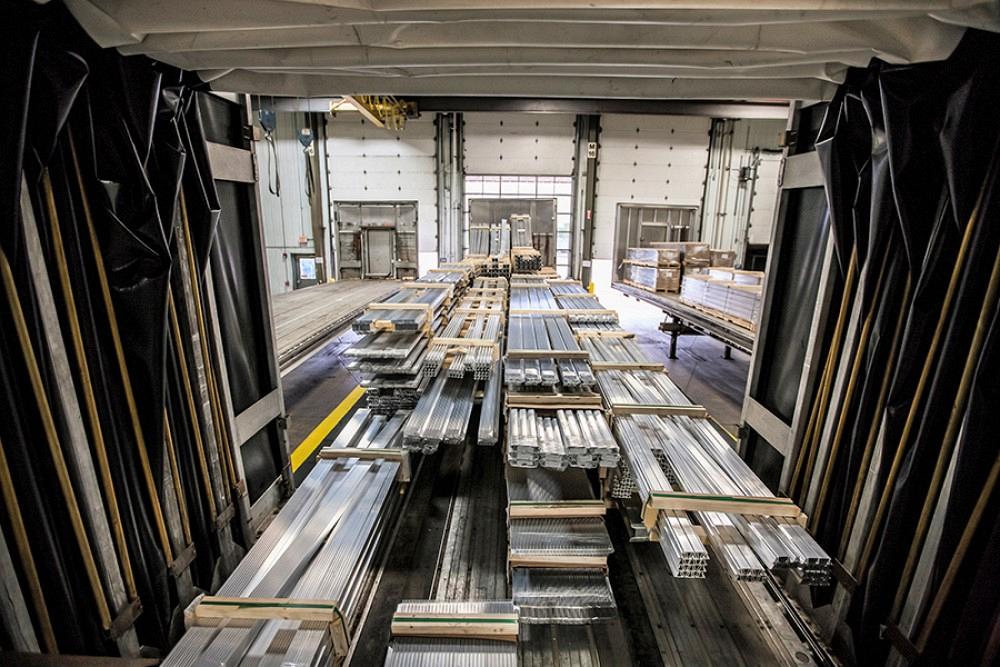Chief sales and marketing officer
- FMA
- The Fabricator
- FABTECH
- Canadian Metalworking
Categories
- Additive Manufacturing
- Aluminum Welding
- Arc Welding
- Assembly and Joining
- Automation and Robotics
- Bending and Forming
- Consumables
- Cutting and Weld Prep
- Electric Vehicles
- En Español
- Finishing
- Hydroforming
- Laser Cutting
- Laser Welding
- Machining
- Manufacturing Software
- Materials Handling
- Metals/Materials
- Oxyfuel Cutting
- Plasma Cutting
- Power Tools
- Punching and Other Holemaking
- Roll Forming
- Safety
- Sawing
- Shearing
- Shop Management
- Testing and Measuring
- Tube and Pipe Fabrication
- Tube and Pipe Production
- Waterjet Cutting
Industry Directory
Webcasts
Podcasts
FAB 40
Advertise
Subscribe
Account Login
Search
Supplier financial health check, Part II: Supply chain clairvoyance a must for manufacturers
9 questions to help manufacturing companies predict suppliers’ postpandemic response
- By Steve Schabel
- June 18, 2020
- Article
- Shop Management

The manufacturing supply chain will continue to evolve during and after the coronavirus pandemic. Now is the perfect time for manufacturers to evaluate suppliers to ensure they can meet production needs when COVID-19 has passed. Getty Images
Editor’s Note: This is the second edition of a 3-part series. Read Part I of the supplier financial health check series, which Jon Olson of Alexandria Industries covers how being confident in a suppliers’ stability during the COVID-19 pandemic needs to be more than a gut-check for product manufacturers.
Things change. Manufacturers could not have planned for the COVID-19 crisis, and it has revealed weak links in the supply chain. The supply chain will continue to evolve during and after the coronavirus pandemic, so how can you prepare for what’s ahead? Now is the perfect time to evaluate your suppliers to ensure they can meet your manufacturing needs when COVID-19 has passed.
Evaluating your suppliers’ specific attributes now will help you determine if they are the best partners for your manufacturing business going forward. And understanding the factors behind these business attributes will enable you to steady what may be a rocky COVID-19 supply chain boat.
1. How have our suppliers shown resiliency during the COVID-19 crisis? Suppliers that engage and walk closely with you through the pandemic view hardships as opportunities. If you look closely, you will likely see this in everything they do. Pay attention to the solutions your suppliers propose to ensure they have your best interest in mind.
2. How easily do our suppliers adjust to our unexpected business needs? Suppliers that show the flexibility to adjust work flow understand that the changing needs of their customers are sometimes out of their control. Smart suppliers keep the current and future needs of customers and industries top of mind by considering ways to adjust their own business plans and operations. They also strive to be innovative by creating solutions to problems as they arise.
3. Has our suppliers’ unreliability caused a “line-down” incident? Supply chain interruptions can be extremely costly. Reliable suppliers deliver your components on time—every time. They develop a close working relationship with you, keep open lines of communication, and provide advanced notice when things need to change. Reliable suppliers work closely with you to develop satisfying resolutions.
4. Do our suppliers have reliable sources for the materials we require for our products? Suppliers that source their materials from China or elsewhere outside the U.S. are facing sourcing challenges as the coronavirus pandemic dominoes. Savvy suppliers rely on multiple material sources to ensure they can meet your needs. They also secure domestic material sources to protect against international trade and shipping issues.
5. Do our suppliers foster long-term relationships with their suppliers? Repercussions of COVID-19 are bringing to light several issues in the supply chain. Suppliers realize how important it is to not only build strong relationships with their customers, but also take time to build strong and healthy relationships with their own suppliers. Suppliers who have strong relationships with their own suppliers can more likely be flexible when they need to be.
6. Do our suppliers offer the same services at multiple locations? Suppliers that offer duplicate services at different locations add another layer of protection from unexpected events that can stop production. These suppliers are more likely to be able to serve you during troubled times, like now.
7. How do our suppliers react when we change our forecast or put an existing order on hold? If your product is used in the fight against COVID-19, your orders probably have doubled or tripled compared to your original forecast. If your product is not essential, you may have put production on hold because of a shutdown. Smart suppliers know things change, so they build in allowances for potential changes and use formal processes to adjust their capacities. They will work with you to meet your changing needs, even if that means accommodating your exponential growth overnight. Successful suppliers will retain customers because they go out of their way to help those customers survive their own challenges.

Product manufacturers may emerge from the early days of the COVID-19 crisis ready to get back to business, but are their supply chain partners ready? Will they be able to deliver metal parts as they did before the pandemic? Finding out what suppliers can and can’t do after this economic slowdown can ensure a more robust supply chain performance down the road. Image provided by Alexandria Industries
8. How do our suppliers react when we need to delay a new project? We now know a pandemic will cause needed adjustments in operations. This may include putting anticipated projects on hold. Valuable suppliers will want to know why you put the project on hold and offer suggestions, such as involving their engineering staff to help with project adjustments, perhaps because you had to cut your team during the pandemic. They will offer insight and options to help you reduce costs or redesign the components needed to help you launch your product sooner rather than later. If you selected suppliers on piece-part price alone, you may not have the benefit of additional help when times get tough.
9. What benefits can our U.S. suppliers offer over overseas suppliers? If you source offshore, you may have had trouble with your suppliers delivering components during border closings from the pandemic. Competitive U.S. suppliers will show you clear gaps in offshoring (not only those occurring from COVID-19) and the expected return on investment when reshoring.
Choosing to onshore your product manufacturing can result in a number of benefits:
- Shorter lead times
- Lower freight costs
- Shipping and receiving when borders are closed
- Ability to support local, state, and national security
- Ability to create U.S. jobs
Get Ahead of Your Competition
Assessing supplier attributes with these questions can help you conduct a fair, open-minded evaluation of your supply chain to ensure it’s as strong as it can be to put your company in the best competitive position and grow your market share. Identify the attributes that are most important to you and your business to determine if your current suppliers are meeting your supply chain needs of today. If they’re not, it could be time to shop for a new supplier.
As an OEM design engineer or component buyer, step back to look at the big picture when choosing a manufacturing supplier. It is risky to make decisions based on the lowest price without considering other crucial criteria that can affect your success in the ever-changing supply chain world.
Think about doing things differently. Grab a different oar and give yourself the opportunity to work with innovative manufacturing suppliers to create industry-disruptive solutions for your product needs that put you ahead of your competition. Make sure you are doing your part to stop your supply chain boat from rocking.
About the Author
subscribe now

The Fabricator is North America's leading magazine for the metal forming and fabricating industry. The magazine delivers the news, technical articles, and case histories that enable fabricators to do their jobs more efficiently. The Fabricator has served the industry since 1970.
start your free subscription- Stay connected from anywhere

Easily access valuable industry resources now with full access to the digital edition of The Fabricator.

Easily access valuable industry resources now with full access to the digital edition of The Welder.

Easily access valuable industry resources now with full access to the digital edition of The Tube and Pipe Journal.
- Podcasting
- Podcast:
- The Fabricator Podcast
- Published:
- 04/16/2024
- Running Time:
- 63:29
In this episode of The Fabricator Podcast, Caleb Chamberlain, co-founder and CEO of OSH Cut, discusses his company’s...
- Industry Events
16th Annual Safety Conference
- April 30 - May 1, 2024
- Elgin,
Pipe and Tube Conference
- May 21 - 22, 2024
- Omaha, NE
World-Class Roll Forming Workshop
- June 5 - 6, 2024
- Louisville, KY
Advanced Laser Application Workshop
- June 25 - 27, 2024
- Novi, MI
































